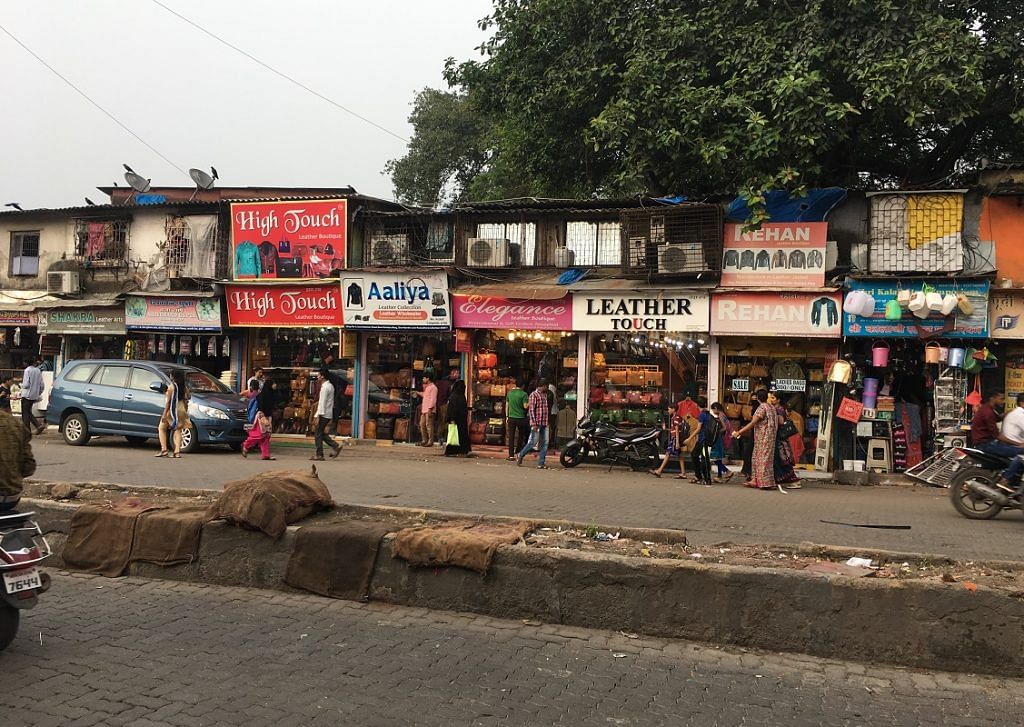Once famous for its leather business, Dharavi shops are badly hit by the 2015 Maharashtra govt order curbing supply of bullock hide as well as note ban and GST.
Mumbai: After 15 years of slaving away as a worker in one of the myriad household manufacturing units of Mumbai’s Dharavi, famous for its leather industry, Mohammed Ashraf decided to start his own leather factory in Asia’s largest slum.
He cobbled up enough money to rent a tiny two-storey hutment, accessible by a wobbly ladder from a tapering alleyway, pitch dark due to being flanked by dingy shanties on either side. He bought two machines, hired two workers and sourced contracts from his years of networking with showrooms as a worker.
“I thought I could earn more money if I set up my own business. I started a little over two years ago but the demand for leather goods has only tanked since then, first due to the ban on cattle slaughter, then demonetisation, followed by the Goods and Services Tax (GST).
“Despite all this investment in starting my own business, I probably earn just as much as I used to as a worker. I am struggling to meet my maintenance cost,” Ashraf said.
Although there are no official estimates on the size of Dharavi’s leather manufacturing industry, those involved in the business peg it at 15,000-20,000 units. According to government data, Maharashtra accounts for 32 per cent of the country’s production capacity of leather sandals and 15 per cent of leather goods. A sizeable chunk of this comes from Dharavi.
The leather industry in Dharavi, comprising small players, has been struggling since 2015, the year when the Maharashtra government implemented the beef ban throttling the supply of bullock hide, considered softer and more durable than buffalo skin to make leather goods.
The following year, the cash crunch due to demonetisation hit demand and business. Earlier this year, demand plummeted further as prices of leather goods surged due to the rollout of GST. The new tax regime classifies leather as a luxury item and brings a levy of 28 per cent, more than double the 13.5 per cent charged earlier.
“We use only buffalo skin now for our products,” said Mohammed Zaid, who owns Leather Touch, one of the many leather showrooms dotting the busy Sion-Dharavi Road.
“But besides making it difficult to source raw material, the beef ban also dented the overall perception about our industry. But what really hit our earnings was notebandi (note ban) followed by GST. Notebandi killed demand and GST increased prices,” he said.
Zaid has eight employees working for him — three in the showroom and five in the manufacturing unit he owns.
“Until 2015, we earned Rs 3-3.5 lakh per month, which has fallen to about Rs 1.5 lakh now,” he said. “The rent and maintenance of our showroom space is itself about Rs 70,000 a month. We are barely managing to pay salaries. We haven’t resorted to any job cuts for now, but if the situation doesn’t improve we might have to take the step.”
Kaisar Shaikh, a salesman at Mozri, another showroom a few block away from Zaid’s, said a major loss after the rollout of GST has been the lack of any corporate orders.
“Bulk corporate orders for small leather items such as wallets and handbags used to be a good source of revenue during festivals such as Diwali. But with a spurt in taxes, a handbag that would cost about Rs 1,300 earlier is now available at no less than Rs 2,000, so our regular corporate clients too have stopped buying,” Shaikh said.
He added that a handful of owners of small manufacturing units have shut shop and started working either as labourers or moved to other cities.
Back in his small workshop, Ashraf is also contemplating the same.
“When I first started my unit, I used to get orders to make at least 3-4 pieces of leather goods a day. Now, it is 1-2 a week, or at times zero in a week. I don’t know how long I can go on like this,” he said.
